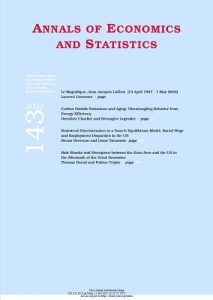
Photo from archive.org
The hypothesis that the preferences of an individual can be represented by a utility function is at the center of economic theory. However, the main restrictions of the theory (the… Click to show full abstract
The hypothesis that the preferences of an individual can be represented by a utility function is at the center of economic theory. However, the main restrictions of the theory (the Slutsky conditions) are often rejected by empirical studies on micro data. This paper uses experimental data to analyze the main explanations of this result. Using the Generalized Axiom of Revealed Preferences (GARP), the subjects of the experiment are divided in two groups: GARP-consistent and GARP-inconsistent individuals. Two models, the translog model and a PIGLOG model, are then estimated for both groups separately and for the total sample. We find that the estimated parameters of the demand equations and tests of the Slutsky restrictions are not influenced by the presence of GARP-inconsistent individuals. Furthermore, the Slutsky restrictions are accepted for the PIGLOG model but rejected for the translog model. The rejection of the Slutsky conditions seems therefore a consequence of a specification problem rather than an "irrationality" problem.
Journal Title: Annals of economics and statistics
Year Published: 2017
Link to full text (if available)
Share on Social Media: Sign Up to like & get
recommendations!